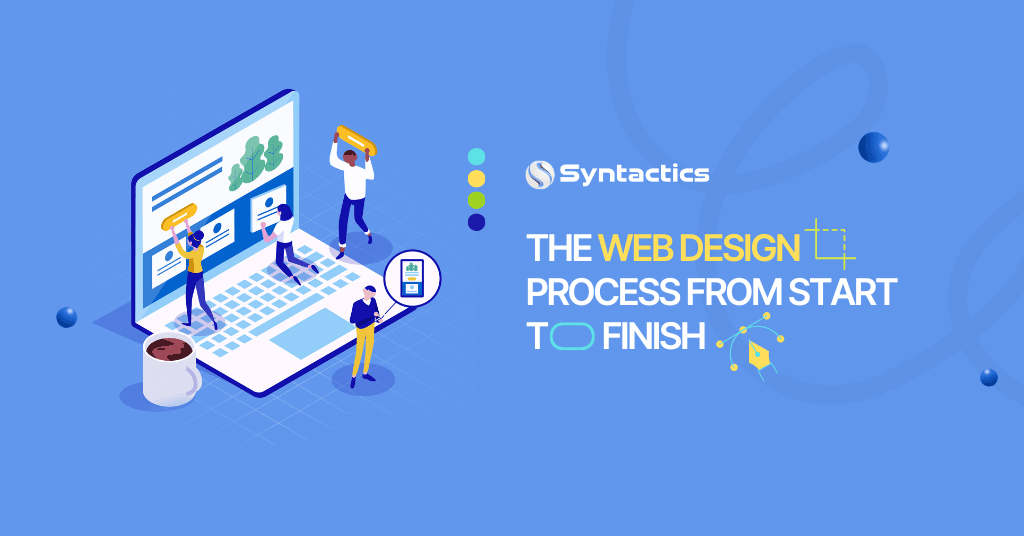
The Web Design Process from Start to Finish
Establishing a company’s online presence is achievable through quality website design. Skilled professionals invest considerable forethought and planning into the web design process, following a variety of best practices and principles.
These days, a well-designed website is a necessity for businesses. It’s the foundation of a brand’s online identity, and first impressions can be the determining factor in a user’s experience.
This is why many business owners partner with expert web design services to ensure their success online.
Websites can differ in size, layout, and functionality. Web design and development professionals can customize sites to attract visitor attention and maximize conversion actions, leading to successful outcomes.
How Effective Web Design Drives Business Success
A website is the foundation of a business’ online presence — the more enticing it is to prospective customers, the better its sales and conversions.
Thus, an effective website design enhances a business‘ credibility in the eyes of its target audience. It’s key to building an appealing site that invites user interactions while increasing leads and conversions.
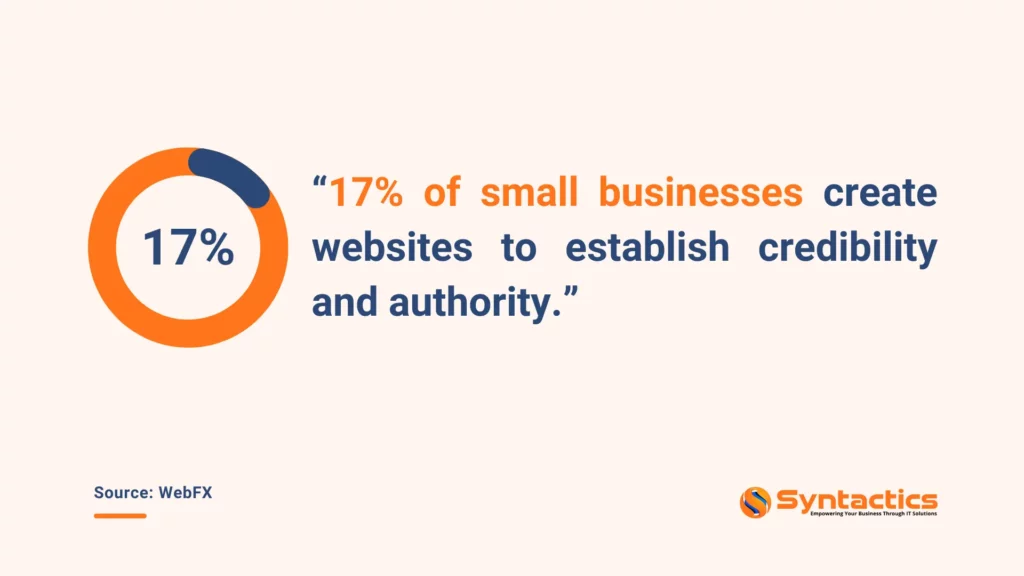
Source: WebFX.
A company website’s design is a reflection of its quality and credibility, which encompasses its established and genuine digital presence.
Also, a user-friendly website encourages visitors to make purchases or sign up for mailing lists and other subscriptions. This makes it instrumental for converting qualified leads.
The Web Design Process From Start to Finish
A successful web design is rooted in the seamless integration of its elements, resulting in an excellent User Experience (UX).
This highlights the importance of a robust website design process, outlined as follows:
Step 1: Planning and Strategizing
Diverse clients have unique preferences and requirements. Before crafting a website, designers prepare the appropriate guidelines that align with client needs.
Web development teams collaborate with clients to understand their vision for the website, enabling designers to turn these ideas into reality.
Skilled teams accomplish this by clearly defining the project scope, which includes expectations, resources, features, and timelines.
Another critical component of the website design process is the creative brief, which provides clear guidelines about development.
The brief considers several design elements, including:
- What the site is for;
- The client’s target audience;
- The website’s goal(s);
- The products or services it offers;
- Industry competitors’ sites, etc.
Step 2: Evaluating the Information Architecture
A clear and effective Information Architecture (IA) is the cornerstone of any website. Professionals design sites with IA in mind to ensure that end-users can navigate and access content effortlessly.
During this phase, web design teams craft sitemaps and work with writers to create content strategies.
Web designers will create a sitemap that outlines the site’s major sections and subpages. This way, the website content can be organized into a logical structure with a clear layout and hierarchy for an improved overall UX.
In addition, designers will plan on what content to populate each section of the website, such as text.
Front-end site content is responsible for grabbing visitors’ attention and ensuring the website’s position on Search Engine Results Pages (SERPs), which leads to more traffic. This makes it vital for building a loyal following and boosting conversions.
Step 3: Designing with Sitemaps and Wireframes
Not all website pages are found in the main or footer menus. In addition, some pages are so deep that they can be overlooked while designing the site.
According to HubSpot, 38% of visitors check a page’s layout or navigation upon seeing a website for the first time. Thus, sitemaps and wireframes are instrumental in understanding the final website design.
Sitemaps are beneficial because they tell visitors — humans and crawler bots alike — where to find vital pages. Search engines such as Google find it helpful for crawling site content.
On the other hand, wireframes are a tool to help clients, developers, and designers see the website’s overall structure.
Here are a few examples of key tools for sitemapping and wireframing:
- Slickplan
- MindNode
- Sketch
- Balsamiq
- Axure
Information on client requirements is vital for creating stylish and responsive web designs. It’s also critical for designers to brainstorm methods for balancing functionality and attractive design.
Step 4: Adding/Incorporating Visual Design Elements
To boost UX, it’s vital to complement engaging copy with compelling visual elements. 32 Essential Web Design Statistics revealed that photos and images are the top visual elements for 40% of website visitors.
As such, some of the most critical visual elements a business needs on its website are images, color, and video.
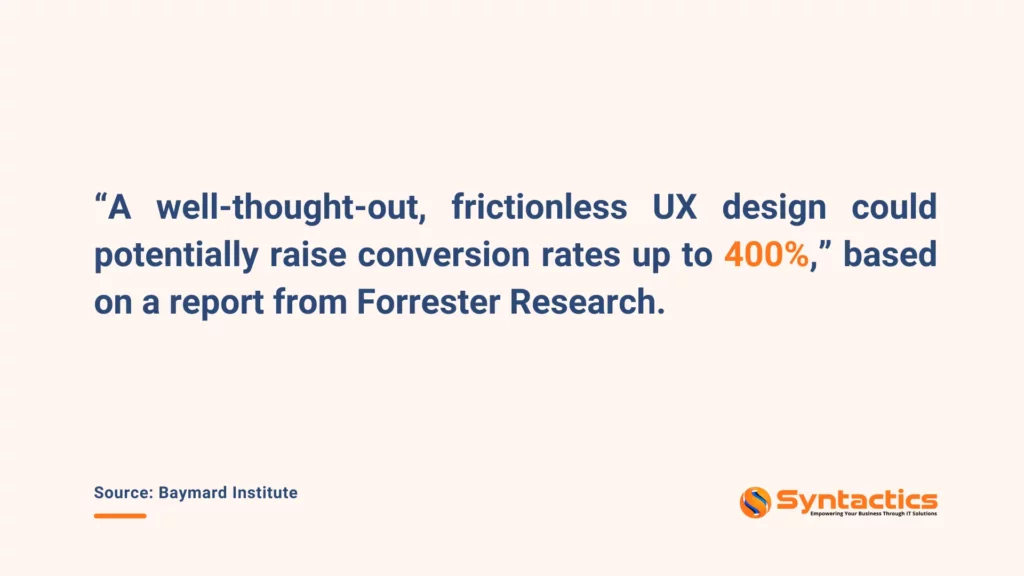
Source: Baymard Institute.
Therefore, a website’s branding should work well with its chosen color schemes, shapes, and textures. A reliable web design company will showcase professionalism through responsive, attractive visuals.
A uniform brand identity is also critical, so designers ensure that the site’s look remains consistent with the business’ existing branding. The creative brief outlines the elements necessary for following the client’s branding.
Step 5: Starting Development
Once the design of the finished product is finalized, web developers can get to work creating sites that function seamlessly.
Of course, development experts can create a website from the ground up, though this may require a considerable amount of resources.
However, there’s always the option to utilize Content Management Systems (CMS) like WordPress, simplifying development thanks to its pre-built themes, templates, and plugins.
A custom WordPress designer can tailor specific aspects of the website for improved functionality or visual appeal.
After development, designers and developers can incorporate feedback and make updates as needed.
Step 6: Testing and Optimization
Teams can conduct thorough tests and optimize the design to ensure a seamless UX across all platforms.
Firstly, it’s vital to ensure that websites render correctly across different browsers. Quality Assurance specialists perform cross-browser testing to verify that site features and visual elements display correctly.
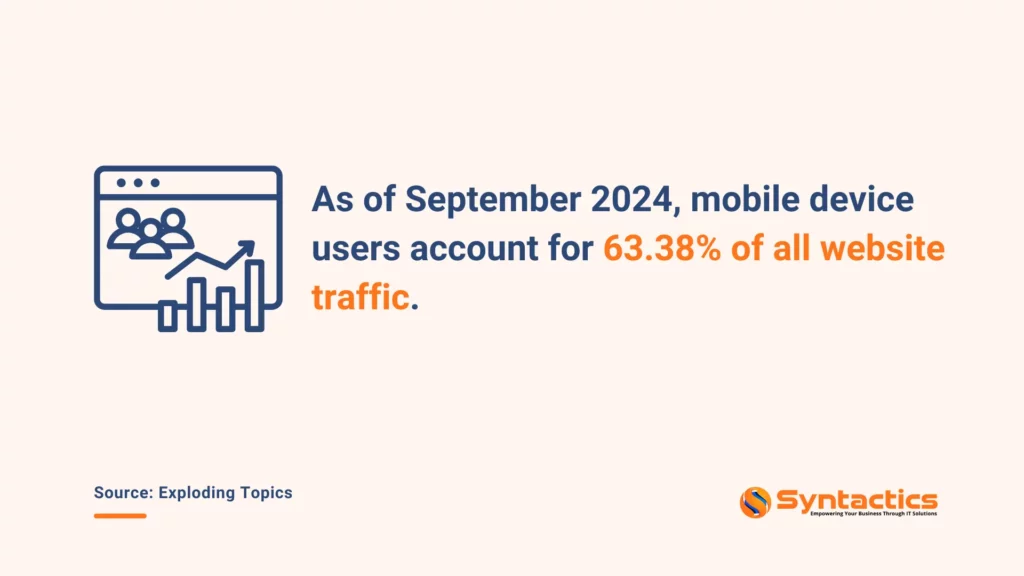
Source: Exploding Topics.
Furthermore, QA specialists can ensure mobile-friendliness, enhancing user engagement. Mobile optimization is more vital in this digital age than ever.
Website speed is another factor that influences user satisfaction and SEO rankings. Search engines favor fast, efficient websites that meet user expectations.
A professional web design company can optimize loading times through page speed optimization.
Step 7: Launching and Maintenance
Though a website may be ready for launch, continuous testing and updates are still necessary even after the site goes live.
Many SEO ranking factors have a say in a website’s popularity on SERPs. Developers can optimize a site and its elements to boost online visibility.
Final Thoughts
In building a website, professionals collaborate through each step of the web design process to craft a polished and functional end product.
Reliable web design services create a responsive and attractive website that fulfills client expectations, enhances the User Experience, and converts visitors into customers, ensuring online success.
Hire Web Design Experts from the Philippines!
This blog was updated on November 20, 2024.
Frequently Asked Questions About Web Design
What is the goal of web design?
Web design crafts a seamless and engaging experience that aligns with the brand while meeting user expectations.
Web design goes beyond building an attractive site — it’s also crucial for increasing leads and conversions and establishing a robust digital presence.
A visually appealing, user-friendly website is an indicator of credibility that helps site visitors understand the brand and its products or services.
Is having a website better than having social media accounts?
While a company without a dedicated website can build a digital presence via social media networks and online directories, these platforms offer limited information and features.
Social media accounts are vital for audience engagement, but a dedicated website is a more comprehensive, customizable platform that:
- Effectively communicates a brand’s identity;
- Showcases products and services, and
- Serves as a central hub for all digital activities.
Are clients involved in the website design process?
It’s highly recommended that clients be actively involved in the design phases and throughout development to ensure that the end product meets expectations.
Of course, the client must approve the drafts or templates before the final design is developed.
After developers bring the finalized design to life through coding, the client will then review the work. Upon client approval, the website is ready for launch.
How long should a web design project take?
A web design project’s turnaround takes around one to two weeks but depends on several factors, such as the following:
- The designers’ and developers’ speed and accuracy;
- The project scope;
- Revisions, etc.
However, a more precise turnaround time will largely depend on the client.








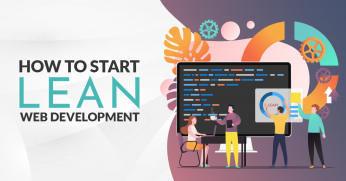







Comment 0